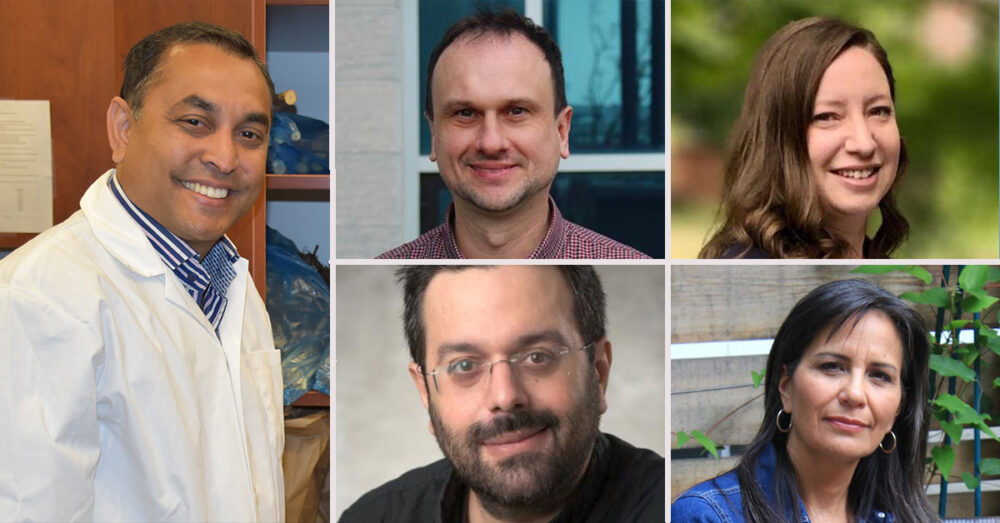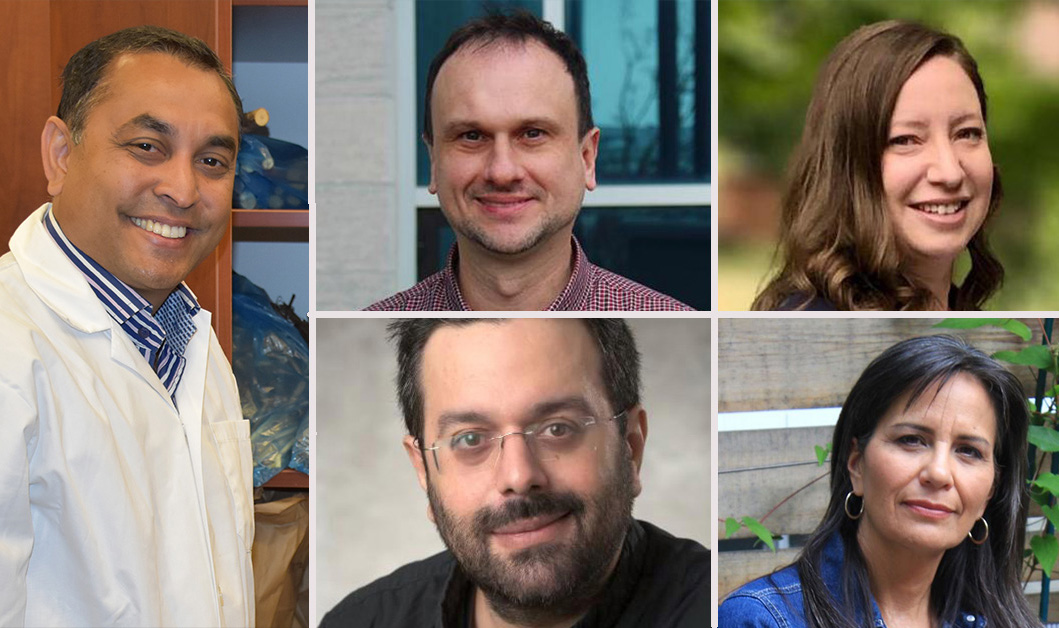
Five University of Guelph research projects will receive a federal investment worth almost $1 million for studies ranging from Indigenization strategies to nutrition and health to biomass fuels.
Today, François-Philippe Champagne, federal Minister of Innovation, Science and Industry, announced more than $77 million to support 332 research infrastructure projects at 50 universities across the country.
The investment will come largely from the Canada Foundation for Innovation (CFI) through its John R. Evans Leaders Fund. The fund helps universities retain leading faculty and provides researchers with foundational infrastructure needed to become leaders in their fields.
“The great diversity in projects receiving this funding speaks to the University of Guelph’s impressively broad range of expertise,” said Dr. Malcolm Campbell, vice-president (research). “This important investment from CFI will help our researchers push the boundaries in their fields through discovery and innovation that will improve life in many different ways.”
“The Government of Canada continues to recognize the leading research at the University of Guelph, which improves the lives of Canadians,” said Guelph MP Lloyd Longfield.
“The range of projects – from expansion of Indigenous principles and community engagement at the Arboretum to the climate change research of biomass, research on intestinal health, and research around soil recovery and all the way to exploring neutron stars – shows the diversity of contributions the University of Guelph researchers are making to improve life and our understanding of our planet and, indeed, the universe.”
Dr. Kim Anderson
Dr. Anderson, Department of Family Relations and Applied Nutrition, will receive $298,160 for a project with Drs. Sheri Longboat, School of Environmental Design and Rural Development, and Brittany Luby, Department of History, to develop Nokom’s House.
The first of its kind at a southern Canadian post-secondary institution, this research lab to be constructed in the U of G Arboretum will incorporate Indigenous principles and community engagement to provide a culturally safe space for Indigenous research methods. The “grannie’s cabin” will enable the team members to investigate impacts of land-based practices and pedagogy in their respective fields.
Dr. Jennifer Monk
Dr. Monk, Department of Human Health and Nutritional Sciences, will receive $85,720 to establish a nutrition and intestinal health laboratory.
The lab will study dietary components in plant-based foods to help inform dietary recommendations to promote intestinal health. The lab is expected to help reduce severity of chronic diseases, including obesity, to improve quality of life and lessen annual health-care costs in Canada.
Dr. Animesh Dutta
Dr. Dutta, School of Engineering, will receive $265,718 for a project to turn organic agri-food biomass into power and bio-based chemicals, fuels and materials.
Dr. Rafael Santos
Per capita, Canada has more solid biomass, including organic waste from the agri-food sector, than any other country. Along with engineering professor Dr. Rafael Santos, Dutta aims to help convert agricultural biomass into useful products, diverting organic waste from landfill, giving farmers new uses for crop residues and reducing greenhouse gas emissions.
Dr. Adam Gillespie
Dr. Gillespie, School of Environmental Sciences, will receive $130,000 for studies of a novel approach to understanding soil organic matter.
Healthy soils, including soil organic matter, are key to sustaining life and mitigating
land degradation. Using sophisticated analytical equipment, Gillespie aims to learn more about varying organic matter composition, including its contribution to soil health, its decomposition rates and the ecosystem services it provides.
Dr. Alex Gezerlis
Using computer simulations to explore neutron stars is the goal of a $181,830 project by Dr. Gezerlis, Dr. Liliana Caballero and Dr. Daniel Siegel, all of the Department of Physics, who will use advanced research computing equipment to analyze data from gravitational wave detectors on Earth and in space.
These detectors provide information about celestial objects including neutron stars. In 2017, the first-ever observed collision of two neutron stars started a new research field called “multi-messenger physics” that allows scientists to probe the extreme physics of neutron stars and black holes.
